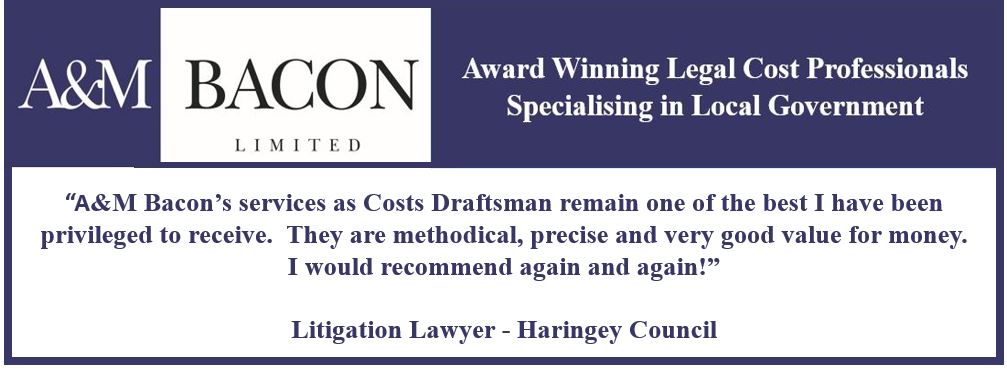Risk and recyclables
 Cynyr Rhys and Gayle Monk assess the implications of the Environment Agency's recent announcements on the “risk-based regime” to the separate collection of recyclables.
Cynyr Rhys and Gayle Monk assess the implications of the Environment Agency's recent announcements on the “risk-based regime” to the separate collection of recyclables.
On 22 December 2014, the Environment Agency published a Briefing Note entitled “Separate Collection of Recyclables” which details the compliance approach that will be taken in respect of producers’ and collectors’ obligations under the Waste (England and Wales) (Amendment) Regulation 2012 (the “Regulations”). The guidance confirms that the Environment Agency expects a high standard from collectors in respect of their new obligations and will adopt a “risk-based regime” towards compliance.
This is the first substantial guidance that has been produced in respect of this fundamental shift in how the United Kingdom is to process recyclables in accordance with EU Law as of 1 January 2015. However, the Environment Agency stresses that this should not be construed as statutory guidance but information to “help those affected to meet the requirements”.
The Regulations
From 1 January 2015, an establishment or undertaking which collects waste paper, metal, plastic or glass must do so by way of separate collection. These requirements apply where separate collection is:
- necessary to ensure that waste undergoes recovery operations in accordance with Articles 4 and 13 of the Waste Framework Directive, and to facility or improve recovery (the “Necessity” test); and
- technically, environmental and economically practicable (the “TEEP” test).
Environment Agency Guidance – What collectors must do!
Within the guidance, the Environment Agency states that:
- every collector (Waste Collection Authority or establishment or undertaking collecting waste) must, when making arrangements for the collection of waste paper, metal, plastic or glass, ensure that those arrangements are by way of separate collection if the Necessity and TEEP tests are met;
- collectors who currently do not have separate collection arrangements should review their practices and consider if and how they comply ensuring that the Necessity and TEEP test are “rigorously” applied;
- collectors who conclude that it is not necessary or not TEEP to operate collection arrangements should keep, and able to provide for inspection, an audit trail which will assist the Environment Agency to understand the basis of that decision-making process;
- the Environment Agency specifically advises collectors to consult their lawyers to ensure that they are compliant with the new Regulations;
- collectors are expected to ensure in all cases that their customers can avoid putting paper, plastic, metal or glass in the same collection containers as general waste and, subject to the Necessity and TEEP tests, are expected to collect paper, plastic, metal and glass separately from each other;
- the Environment Agency expects producers and collectors (and brokers where applicable) to “work together” to find the right collection system to maximise recycling and compliance with the law.
Environment Agency Guidance – “risk-based regime”
The Environment Agency have announced a “risk-based regime” which is aimed to help collectors achieve compliance but that will at the same time be robust with those who “deliberately ignore their obligations”. The intention is to work with collectors by holding practical conversations or issuing “advisory letters” in the first instance if breaches are found.
Compliance will be reviewed by monitoring sources of information, such as WasteDataFlow and the WRAP website, which will act as indicators of whether a collector is complying with the regulations. The guidance includes an Indicators of Compliance Table (“IoC Table”) to assess whether further scrutiny by the Environment Agency is required. The IoC Table is as follows:
| Level of Compliance | Indicator | Level of Intervention |
| High | Collections which are providing an on-site or doorstep separate collection, or kerbside sorting, of each paper, glass, plastics and cans. | Low |
| Collectors who have rigorously applied the Necessity and TEEP tests and collection arrangements are based on well-evidence, documented and justified decision-making. | ||
| Medium (Possibly failing the Necessity or TEEP test) | Collectors who send co-mingled collections to a MRF which is producing poor quality recyclables. | Medium |
| A collector advertising a new contract that is prescriptive about type of collection/sorting service unless it is clear it wants a multi-stream/separate collection. | ||
| A collection which has moved away from separate collection to co-mingling, or renewed to co-mingling since 2012. | ||
| If one or more of the four materials is only collected through a CA site or bring banks. | ||
| Low/non-compliant | Evidence that good quality recyclate collections deliberately sent for disposal or incineration or remixed with other waste. | High |
| No or little attempt to apply the regulations. No response to requests for information. | ||
| Evidence from site inspections or audits where collections have led to poor management causing environmental harm, or illegal activity such as mis-description or illegal export. |
As suggested in the name, the IoC Table is not an exhaustive list of applicable indicators and collectors should tread carefully when assessing their compliance. To date many collectors have sought to argue that compliance with the new Regulations immediately from 1 January 2015 is impracticable because collection contracts are often for a number of years and the collection infrastructure can have a long lifespan.
However, whilst acknowledging that they will act “reasonably in considering such matters”, the collection industry has known for several years that the legislation was due to come into effect this January and, as a result, the Environment Agency expects to see “improvement measures” being undertaken to contracts that should have taken into account the requirements of the Regulations.
Where, in the Environment Agency’s opinion, the indicators above suggest non-compliance, the below “intervention measures” will be engaged, in order, taking into consideration the “suspected” level of compliance and the intent of the operator concerned.
Intervention Measures
Stage 1 Advisory phone call or letter – to seek to explore and understand the collection activity, and whether improvements can or should be made.
Stage 2 Meeting with operator/collector for discussion
Stage 3 Site inspection
Stage 4 Site audit
Stage 5 Enforcement notice
Stage 6 Warning letter
Stage 7 Formal caution
Stage 8 Prosecution
Each stage is aimed at ensuring and encouraging compliance with the Regulations and a number of discussions will no doubt be had at each stage to seek compliance.
Conclusion
The guidance clearly establishes the Environmental Agency’s position in respect of the Regulations. It expects collectors to comply with the duty to separately collect waste unless compliance isn’t required due to the Necessity and/or TEEP tests.
During the course of January-March 2015, collectors should expect to be contacted by the Environment Agency requesting the disclosure of information on collection methods and, where appropriate, seeking evidence on the application of the Necessity and TEEP tests. Contractors and collectors should therefore be already reviewing their practices, and documentation, in anticipation of contact from the Environment Agency.
Cynyr Rhys is a solicitor and Gayle Monk is an associate at Anthony Collins LLP. Both were involved in the Judicial Review which led to the amended Regulations being published. Cynyr can be contacted on 0121 214 3619 or This email address is being protected from spambots. You need JavaScript enabled to view it., while Gayle can be reached on 0121 214 3630 or This email address is being protected from spambots. You need JavaScript enabled to view it..



